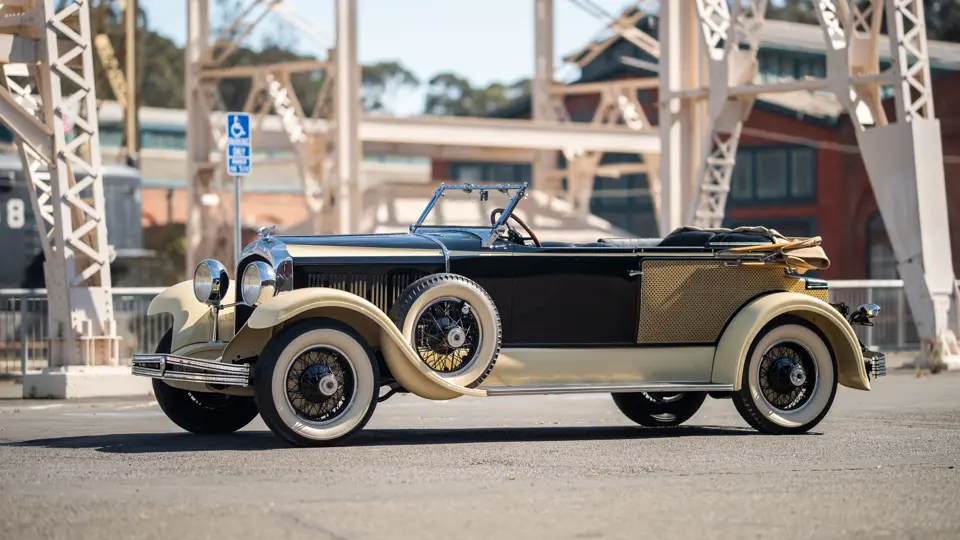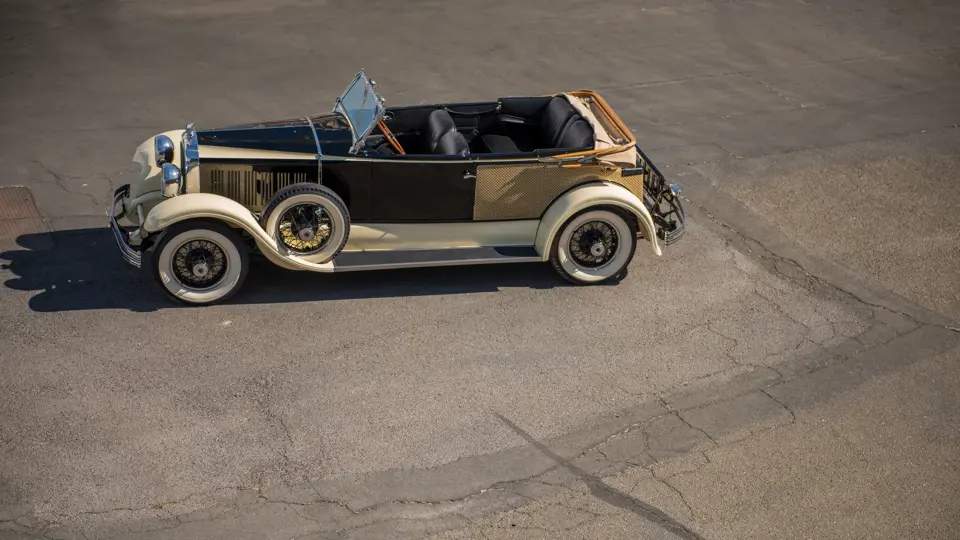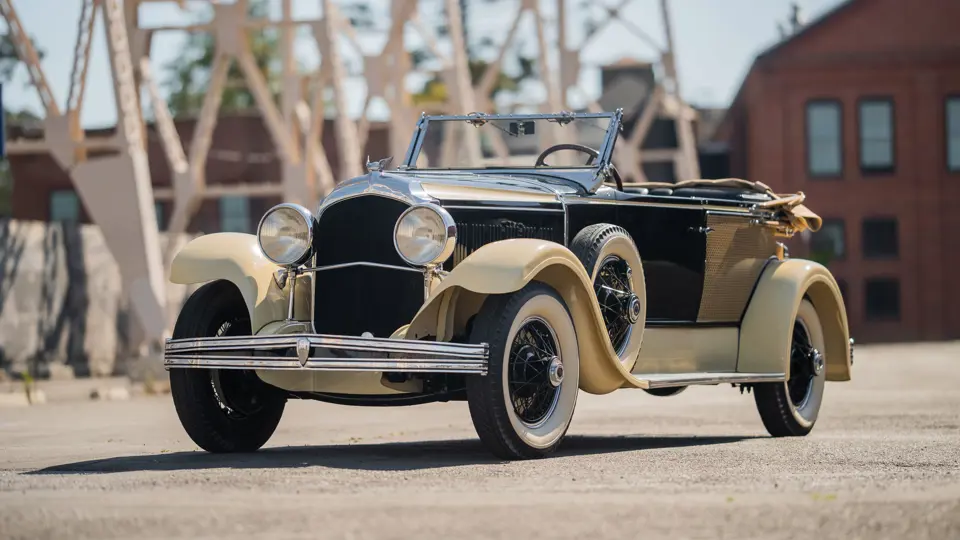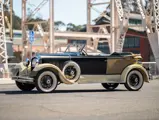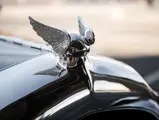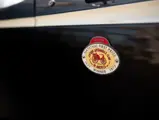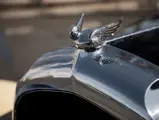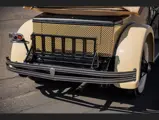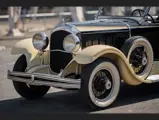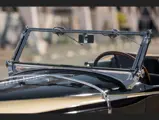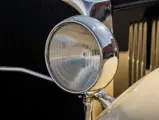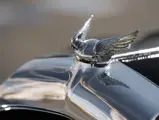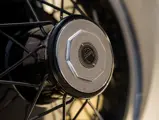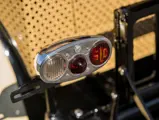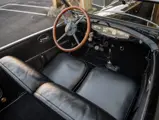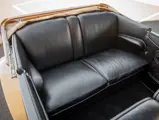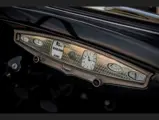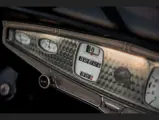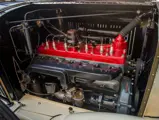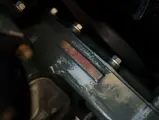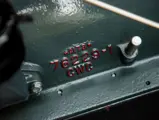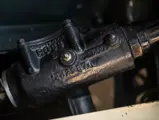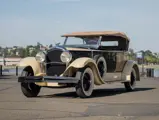
1928 Chrysler Imperial Series 80L Touralette by Locke
{{lr.item.text}}
$112,000 USD | Sold
Offered from Masterworks of Design
{{bidding.lot.reserveStatusFormatted}}
- An early Imperial with beautiful catalogued custom coachwork by Locke
- Built on a chassis noted for its excellent engineering and performance
- One of just two known surviving examples; well-preserved restoration
- Formerly owned by renowned Chrysler collector Paul Stern
- A Classic Car Club of America (CCCA) Full Classic
The dashing Chrysler Touralette was originally drawn by John Tjaarda—future creator of the Lincoln-Zephyr—as his personal automobile. New York coachbuilder Locke, which built Tjaarda’s car, was so impressed with the design that they bought rights to it, and Chrysler subsequently offered it as a “catalogued custom” on the Imperial 80L chassis for 1928.
A two-door phaeton with adjustable front bucket seats, the Touralette featured a top that folded flush with the rear panels, as well as two-tone paintwork and basketweave-style “canework” striping on the aft of the body. The Touralette marked a preliminary step from Chrysler’s early conservatism towards an emphasis on performance and sleek design. It is believed that only five examples of this pioneering style were built, and just two remain in existence today.
According to a feature article on the car in Special Interest Autos magazine number 149, published in October 1995, this particular Touralette was originally built as an export model, reportedly for the US Ambassador to the Court of St. James’s to drive in London. Subsequently the Chrysler was returned to the United States and acquired by renowned Chrysler collector Paul H. Stern of Manheim, Pennsylvania. In Mr. Stern’s ownership the Touralette was converted to left-hand-drive and fully restored. In 1977, the car was awarded a National First Prize by the Antique Automobile Club of America.
In 1982, much of Mr. Stern’s collection was acquired by an owner in Northern California, with whom the Touralette remained until its purchase by the current collection several years later. It has been largely hidden away from public view since, and, indeed, its condition reflects light aging but little actual use. The engine compartment is still very clean, tidy, and attractive, as is the undercarriage, and the paintwork is still in fine condition; even the canework has held up very well throughout. The interior presents similarly, with the Chrysler Fedco plate still present on the dashboard. Locke’s original body number tag remains in place on the sill under the carpeting, indicative of how the Chrysler has held up over the years. Further, with some mechanical recommissioning the car would surely be an ample performer, as the Special Interest Autos article speaks ravishingly of its road abilities.
Whispering of a powerful heritage of sleek Imperial phaetons to come, this unusual, dramatic, and highly significant coachbuilt Chrysler awaits a happy return to the public eye.
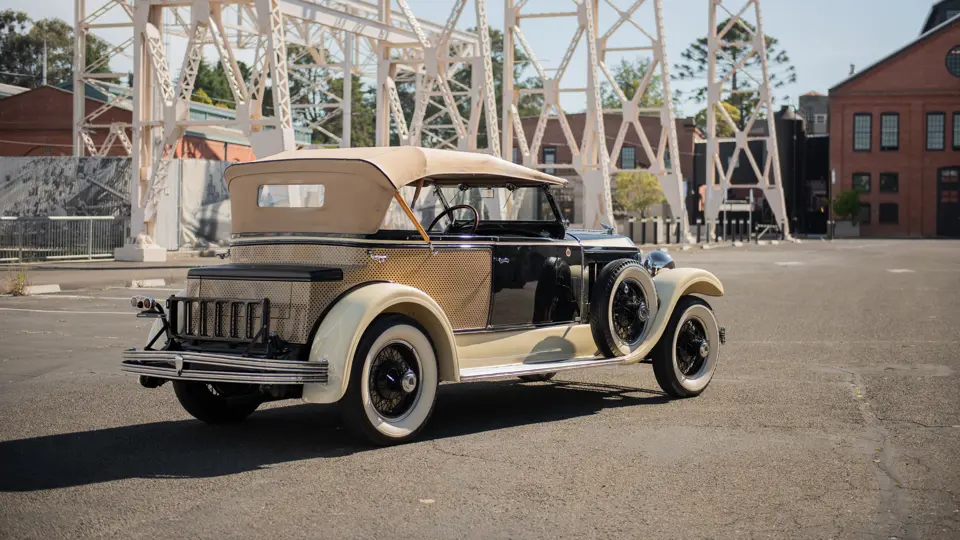



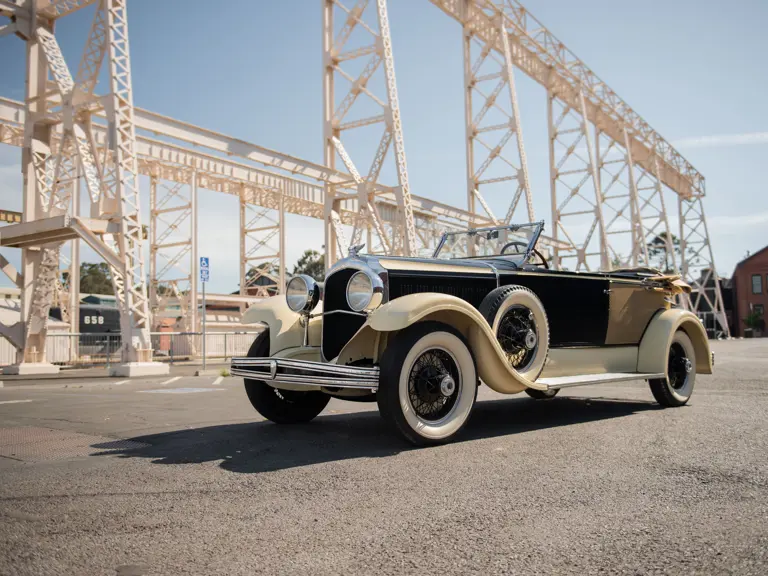

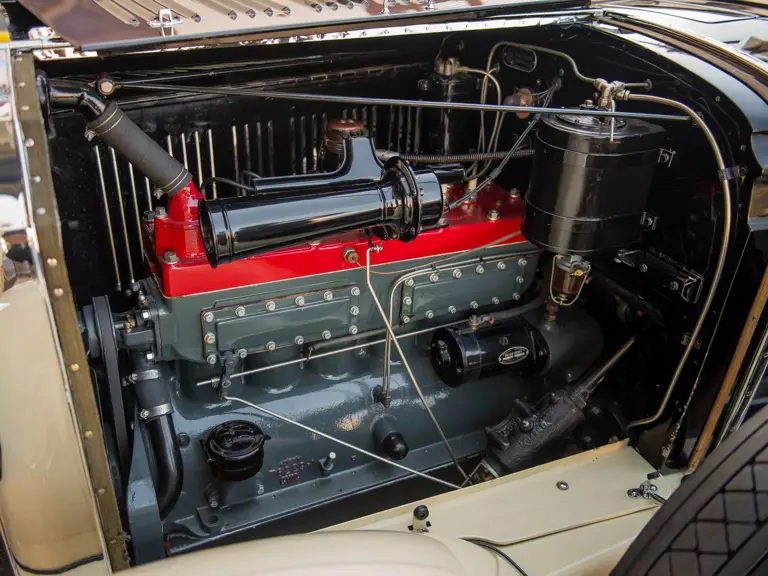
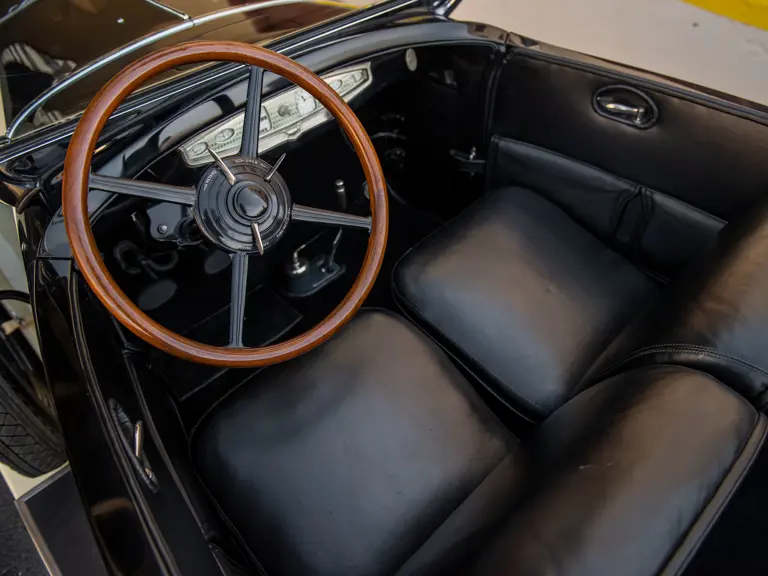
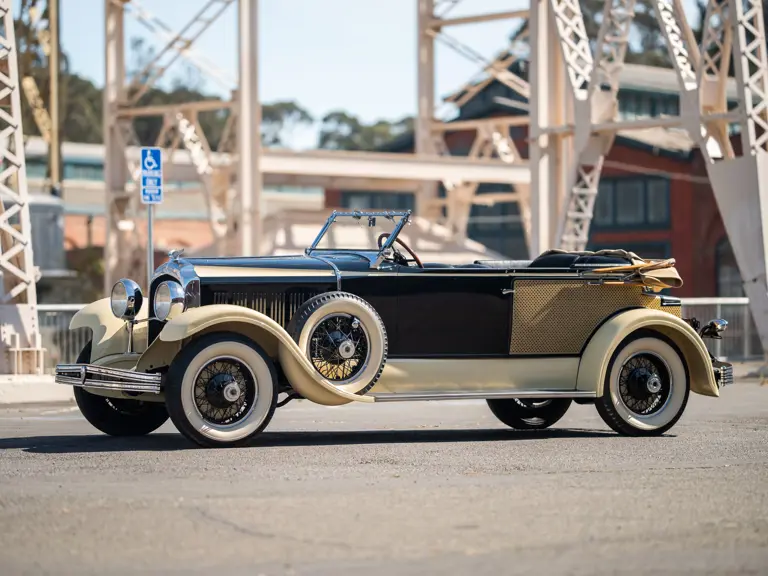

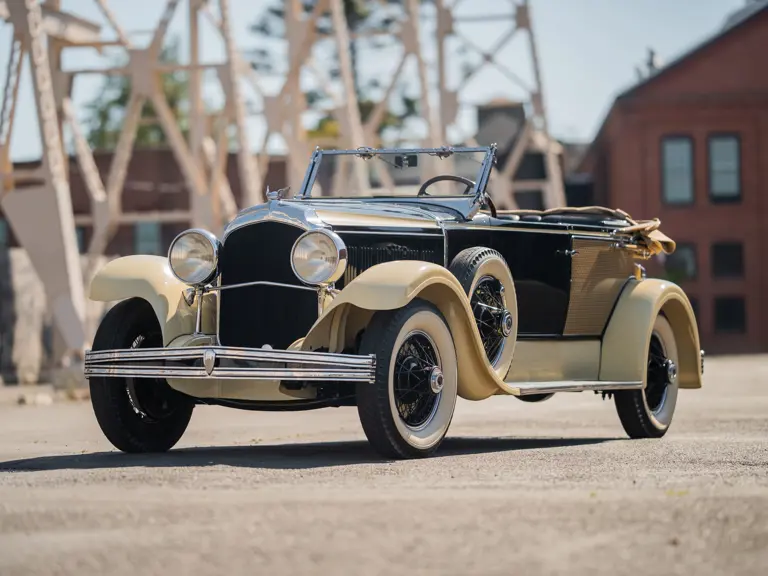
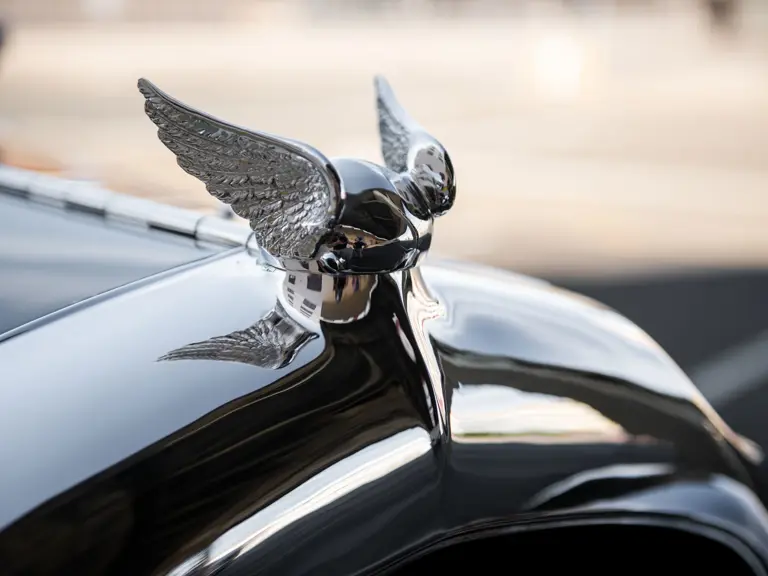
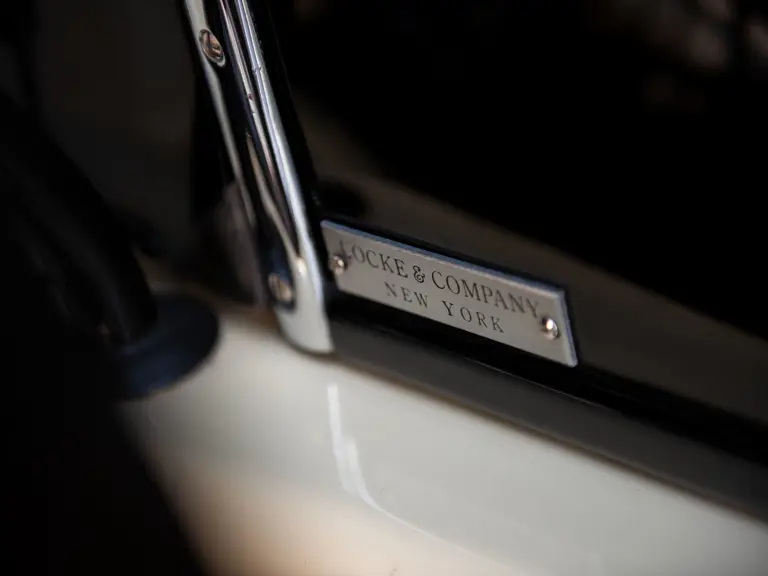
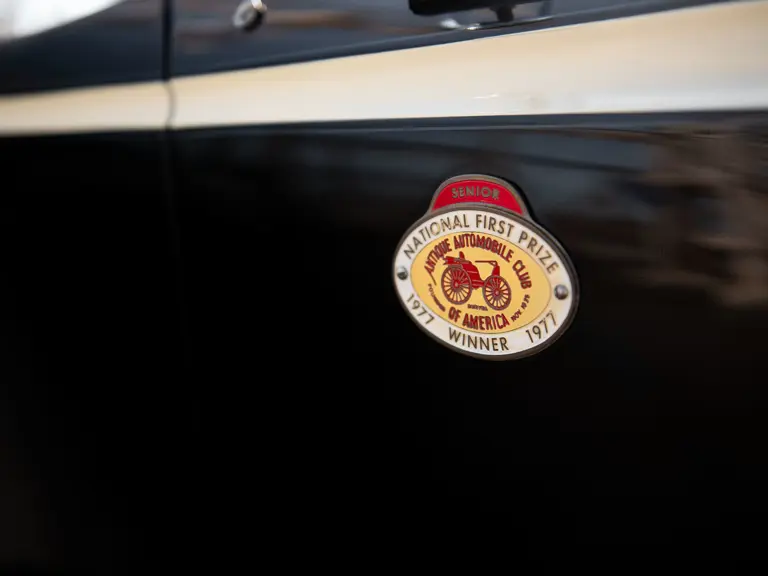

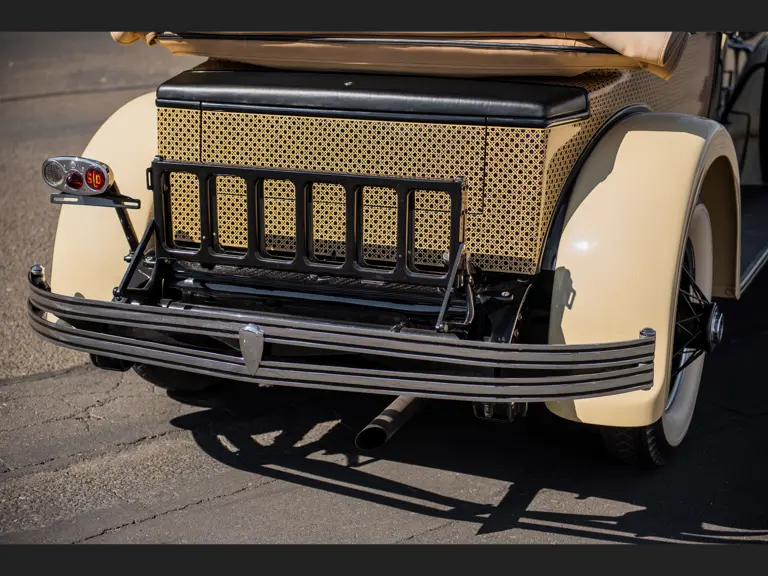

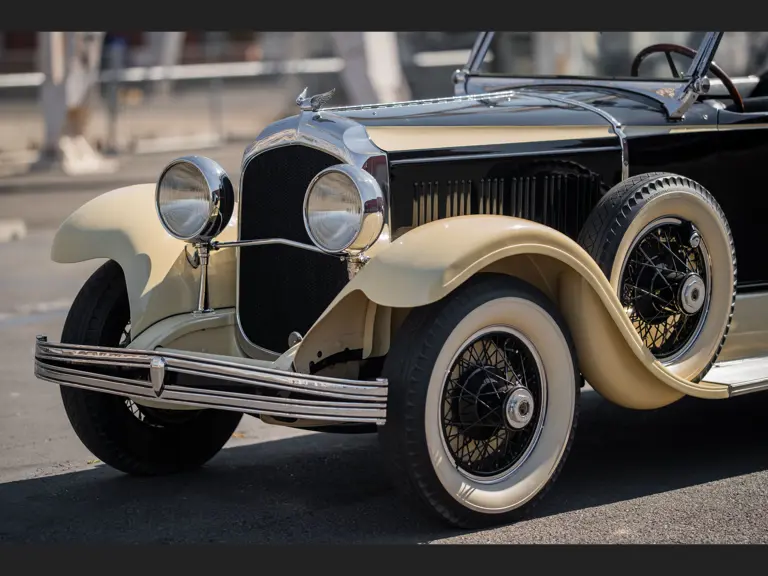

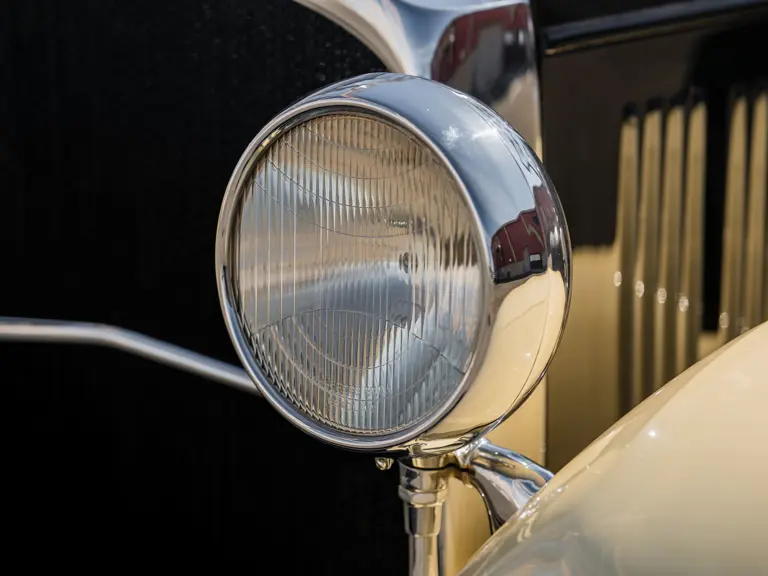
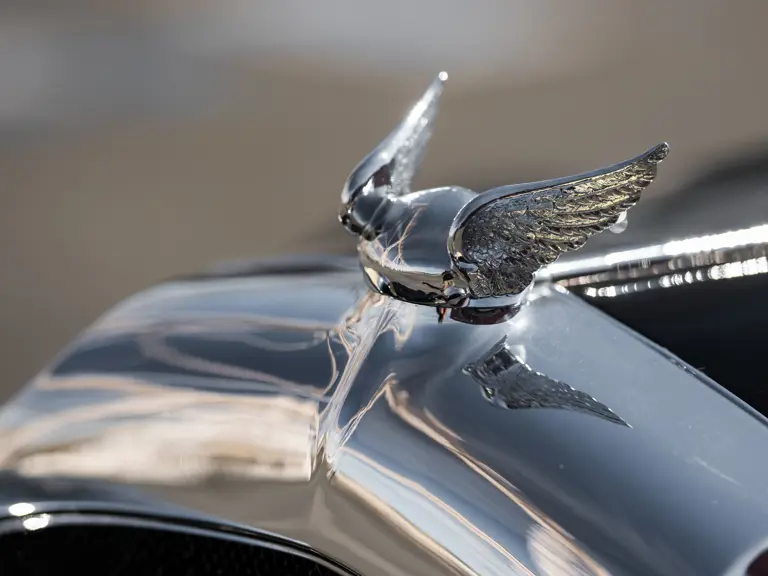


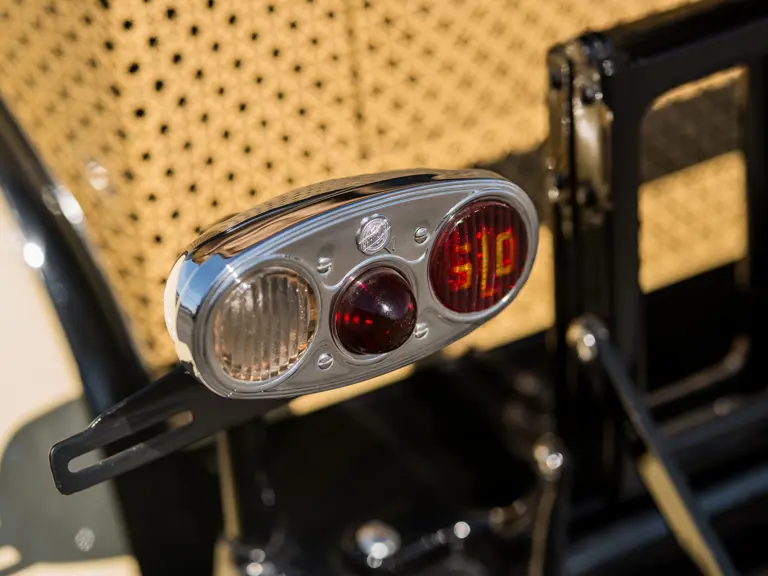

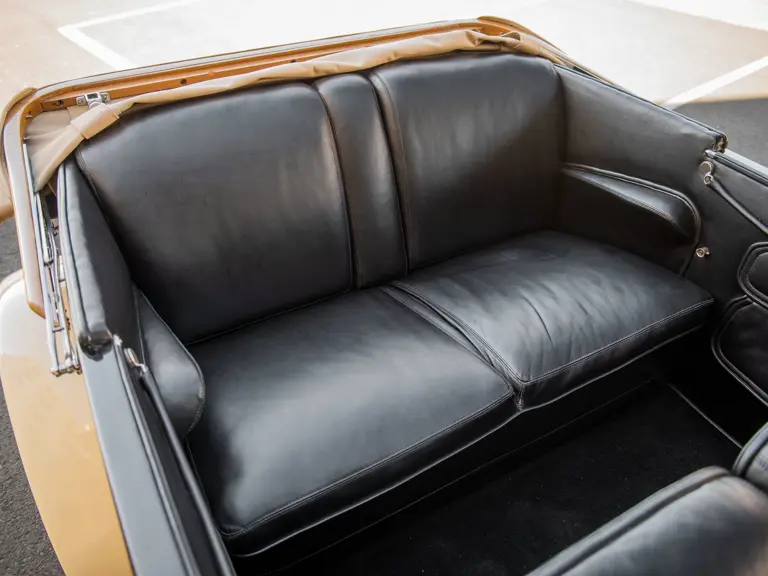

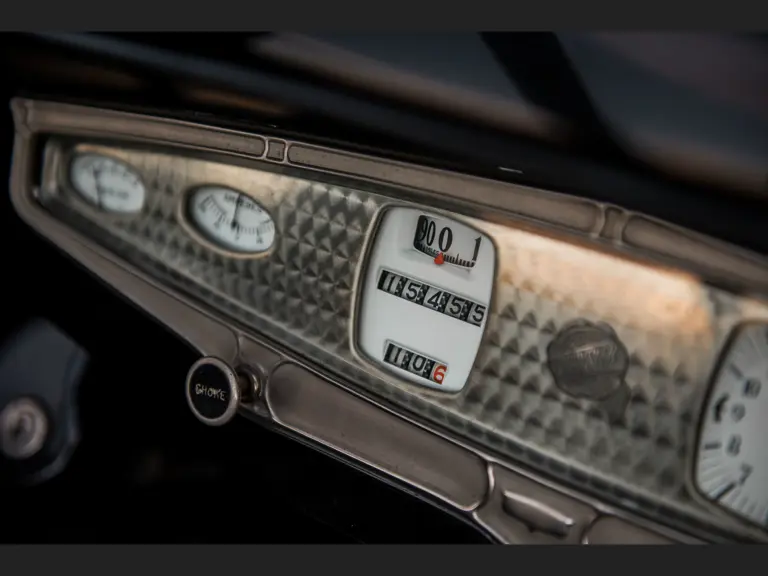

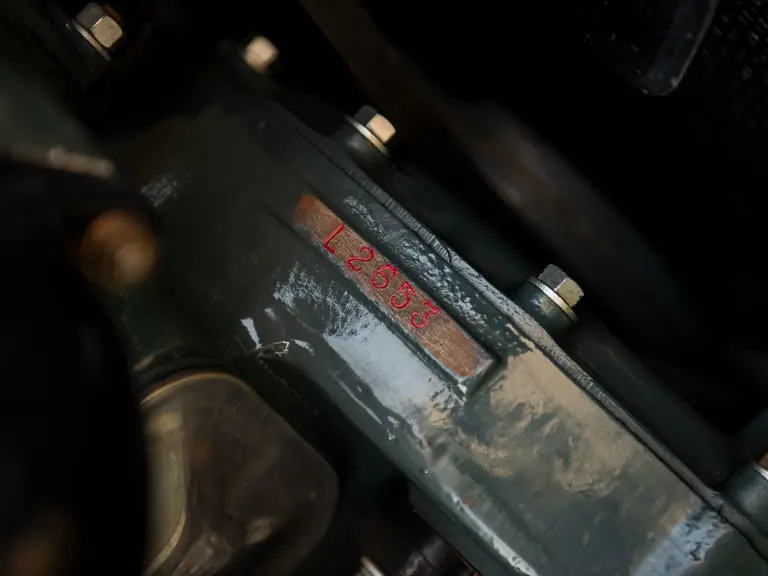
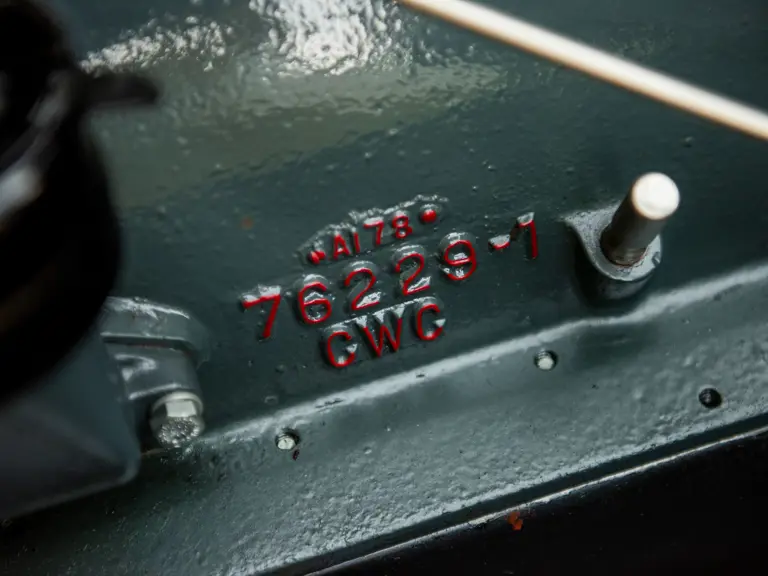


 | Monterey, California
| Monterey, California
